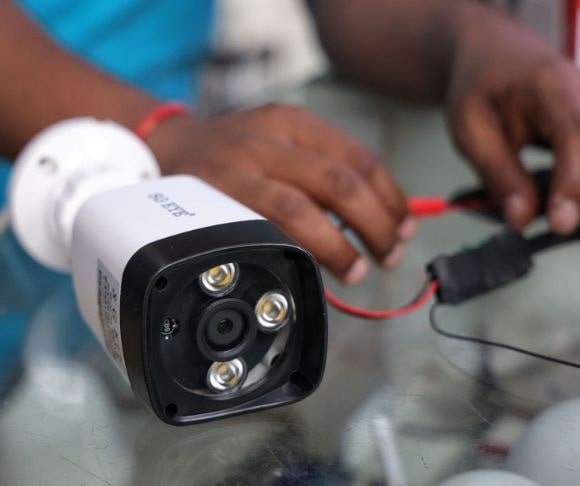Editor’s Note – As the technological realm becomes more pervasive, whom can we trust? Each week, Liberty Nation brings new insight into the fraudulent use of personal data, breaches of privacy, and attempts to filter our perception.
Living Machines are Here
As transhumanism – the idea of incorporating technology into the human body – becomes mainstream, will people become robotic? Conversely, will robots be biological, and will we be able to “program” nature?
 Scientists claim they have created the world’s first “living robots” using stem cells from frog embryos. Researchers from the University of Vermont and Tufts University used a supercomputer algorithm to design the life-forms, which were then replicated using biological material. Resembling a clump of cells, the organisms are called “xenobots” after the African clawed frog species from which the tissue was taken, Xenopus laevis.
Scientists claim they have created the world’s first “living robots” using stem cells from frog embryos. Researchers from the University of Vermont and Tufts University used a supercomputer algorithm to design the life-forms, which were then replicated using biological material. Resembling a clump of cells, the organisms are called “xenobots” after the African clawed frog species from which the tissue was taken, Xenopus laevis.
“These are novel living machines,” says Joshua Bongard, a computer scientist and robotics expert who co-led the research. “They’re neither a traditional robot nor a known species of animal. It’s a new class of artifact: a living, programmable organism.”
“You look at the cells we’ve been building our xenobots with, and, genomically, they’re frogs. It’s 100% frog DNA–but these are not frogs. Then you ask, well, what else are these cells capable of building?” added co-lead researcher Michael Levin.
The organisms are apparently programmable, capable of moving around on their own, able to work together, and are biodegradable. They can live for around a week with a self-contained food source and regenerate themselves after being cut. According to the scientists, similar half-animal, half-robot beings could be used for applications ranging from scraping plaque from arteries and delivering medications inside the human body to collecting microplastics in the ocean or cleaning up radioactive contamination.
As to questions about unforeseen results and ethical implications of manipulating the basic building blocks of life with technology, “That fear is not unreasonable,” Levin says. “When we start to mess around with complex systems that we don’t understand, we’re going to get unintended consequences.” He suggests, however, that teams like his are taking the first steps toward exploring these areas.
Smart Security?
Home security has been a major area of expansion for providers of personal technology – however, smart cameras may not be quite as safe as some residents think. Numerous reports have been made by camera owners claiming they received pictures of the inside of other users’ homes, instead of their own. One Reddit user posted pictures online on January 1, showing a stranger’s home, including pictures of a baby in a crib. “When I load the Xiaomi camera in my Google Home Hub I get stills from other people’s homes,” the person said.

(Photo by Nasir Kachroo/NurPhoto via Getty Images)
Xiaomi, a Chinese tech company well known for producing cheap smartphones, admitted the issue had potentially affected 1,044 users and had occurred due to a cache update. The company apologized to those users whose data was breached and suggested that upgrading to further Xiaomi products would prevent further problems. Apparently, if the camera is linked to Xiaomi’s own Mi Home app, users have nothing to worry about.
Google openly acknowledged the issue but claimed it was solely to do with Xiaomi cameras. It suspended the Chinese company from the Google smart home platform while the matter was investigated, and after two weeks, Xiaomi has now been allowed back.
“We now confirm that we have fully resolved the root cause of this issue, and Xiaomi’s Google integration service has resumed from 16, January,” said a Xiaomi statement, “… At Xiaomi, we take user privacy and information security as [a] top priority. We sincerely apologize for any inconvenience caused for affected users. We will take even stronger measures to prevent such incidents in the future.”
While this particular incident has been “resolved,” it does not change the fact that strangers were given visual access to the insides of peoples’ houses. With more and more devices requiring connection to central hubs in order to function fully, consumers may be concerned that their personal data, and even live video footage of their homes, could be compromised.
Iranian Instagram Messages Deleted
Iran has accused the U.S. of trying to censor its social media posters who commented on the death of General Qassem Soleimani. While the country bans most Western social media platforms, the one remaining network is Instagram. Its government has now said, however, that legal action should be taken over the deleting of posts on the photo-sharing service perceived as expressing support for Soleimani.
The International Federation of Journalists asserted that text and images posted by the country’s state media, as well as individual reporters and influencers, were deleted, and some accounts suspended. It also claimed the Instagram accounts of some media outlets had been removed.
“This poses an immediate threat to freedom of information in Iran,” reported the IFJ, and the organization’s General Secretary Anthony Bellanger said, “At a time when Iranian citizens need access to information it is unacceptable that Instagram should choose to censor Iranian media and individual journalists and users.”
Facebook, which owns Instagram, maintains the deletions are in line with U.S. sanctions. As reported by Coda Story, the company deleted Soleimani’s own page shortly after the Trump administration designated the Islamic Revolutionary Guard Corps – an organization with which Soleimani was affiliated – as a terrorist group. These recent removals are due to the same laws. Facebook spokesperson Stephanie Otway said, “We operate under U.S. sanctions laws, including those related to the U.S. government’s designation of the IRGC and its leadership.”
This is not the first time Iranians have had their internet freedoms restricted, however, as the country’s own government has been known to outlaw social media networks, and most American platforms are prohibited among the masses. Wired reported in 2018 that “YouTube, Facebook, Twitter and the BBC Persian service are all banned in Iran, which has one of the strictest internet censorship policies of any country in the world.” Of course, this does not stop the nation’s elite officials – including President Hassan Rouhani and Ayatollah Khameini – from posting messages on Twitter. These bans occur especially during times of public protest, such as the ones now being held following the revelation that Iran’s military accidentally shot down a passenger plane largely filled with Iranians. In January 2019, the Islamic Republic suggested it planned to ban Instagram as well – perhaps this incident will spur that plan into action.
That’s all for this week from Tech Tyranny. Check back in next Monday to find out what’s happening in the digital realm and how it impacts you.
~
Read more from Laura Valkovic.




